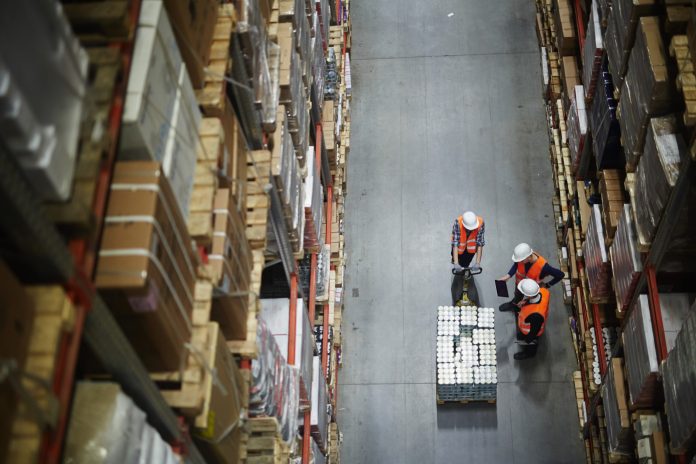
Manhattan Associates’ top trends include automation and robotics, streamlining returns, courier choice, sustainability and intelligent technology.
By Manhattan Associates’ Managing Director for Australia and New Zealand Raghav Sibal.
Manhattan Associates Inc. predicts six key technology trends will have an impact on Australian and New Zealand retailers and supply chains in 2021.
2020 has been a tough year for all businesses, but the retail sector has taken an especially hard hit. With a vaccine on its way, 2021 brings fresh hope for the embattled retail industry, but the continued rise of e-commerce means that many of the challenges faced this year will likely be here to stay in the longer-term.
As the Australian retail sector continues to ramp up into 2021, Manhattan Associates, shares six predictions shaping the future of delivery and warehousing this year.
- Meeting labour challenges with man and machine
2020 saw unrivalled volumes of e-commerce orders passing through warehouses and in 2021 this trend is set to continue. This will bring the issue of labour further into the spotlight and highlight the need for organisations to diversify their labour pools with the use of automation and robotics. In 2021, organisations are expected to continue to invest in greater automation and more integration between man and machine within warehouses. This is will increase capacity and facilitate faster store replenishment in order to meet the expectations of e-commerce customers.
- Hiring help to manage times of peak
While automation and robotics will become far more commonplace in warehouses in 2021, some retailers will still opt to use this technology on a part-time basis. The benefits of pay-as-you-go ‘hired’ robots to support peak trading times will become customary in 2021 as retailers not only cope with increased percentages of e-commerce orders, but also the expected return of traditional peak times too. While many retailers might have previously considered temporarily adding in automation or robotics as too much of an admin and technology integration challenge, a flexible, scalable and adaptable warehouse management system (WMS) can easily keep the part-time help (human or cobot) in check.
- Streamlining returns to gain efficiencies
 The rise in e-commerce orders has also resulted in an increase in returns. Traditionally reserved for the start of the year when retailers would prepare themselves for an onslaught of Christmas returns, retailers must now prepare for higher volumes of returns throughout the year. Streamlining the returns process is key to ensuring bottom-line profits are not eroded too much. An effective WMS can help to streamline the returns process and also means that returned inventory can be made available for shops or online channels quicker.
The rise in e-commerce orders has also resulted in an increase in returns. Traditionally reserved for the start of the year when retailers would prepare themselves for an onslaught of Christmas returns, retailers must now prepare for higher volumes of returns throughout the year. Streamlining the returns process is key to ensuring bottom-line profits are not eroded too much. An effective WMS can help to streamline the returns process and also means that returned inventory can be made available for shops or online channels quicker.
- Giving consumers a courier choice
In 2020, retailers had no choice but to expand their delivery options in order to provide the best customer experience. In 2021, we’ll see these choices expanded even further. Many consumers have become accustomed to their favourite delivery driver, or mode of delivery, and in 2021 we’ll see these relationships go from strength to strength.
- Balancing convenience with sustainability
The expansion of delivery options will force consumers to pay more attention to the sustainability choices they make in 2021. With retailers keen to get their goods delivered to their customers quickly, 2020 has seen next-day delivery become the norm, with an increase in delivery subscription models, as seen with e-commerce retailers such as ASOS and Pretty Little Thing.
In 2021, however, we will see more consumers weighing up the benefits of quick deliveries and convenience against the impact their purchasing and delivery decisions are having on the planet. Customer experience research from KPMG recently found that 58% of consumers were concerned about climate change, and with many retailers already making serious commitments towards sustainability efforts, we will undoubtedly see this issue high on brand and government agendas as normalcy returns.
- Investment in tech continues
While mainstream drone deliveries might not have taken off quite yet, investment in tech is still on the rise. Contactless was an essential component of in-store shopping this year, and greater investment in tech such as last-mile delivery robots and wearable barcode scanning is not only facilitating this but showing how innovative the retail and logistics sector really can be.
In 2021, we will undoubtedly see greater investment in a range of intelligent technology to benefit the retail space across big and small organisations. This will range from investments in big data and analytics platforms to extract more valuable customer marker data; to robotics and automation developments in warehouses and the last mile of the delivery process; to an uptake in cloud-based platforms that improve the internal processes of new initiatives like dark stores or micro-fulfilment centres.
About Raghav Sibal
Raghav Sibal is the Managing Director of Manhattan Associates in Australia & New Zealand, working closely with his team with clients to understand the current state of their supply chain management in order to provide next-generation solutions that remove pain points and create new sources of competitive advantage.
 About Manhattan Associates
About Manhattan Associates
Manhattan Associates is a technology leader in supply chain and omnichannel commerce. We unite information across the enterprise, converging front-end sales with back-end supply chain execution. Our software, platform technology and unmatched experience help drive both top-line growth and bottom-line profitability for our customers.


